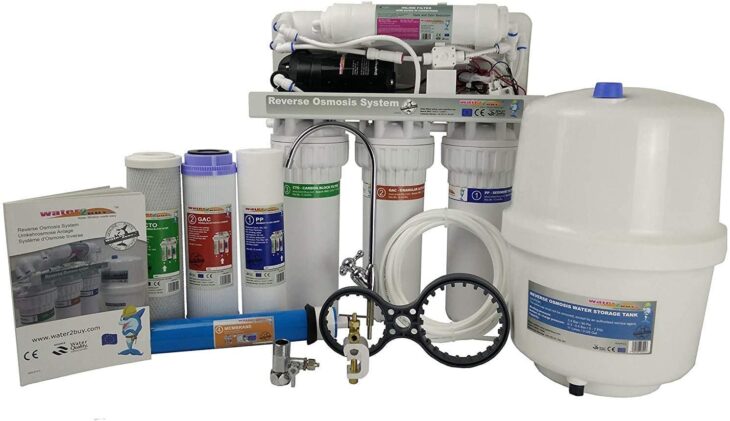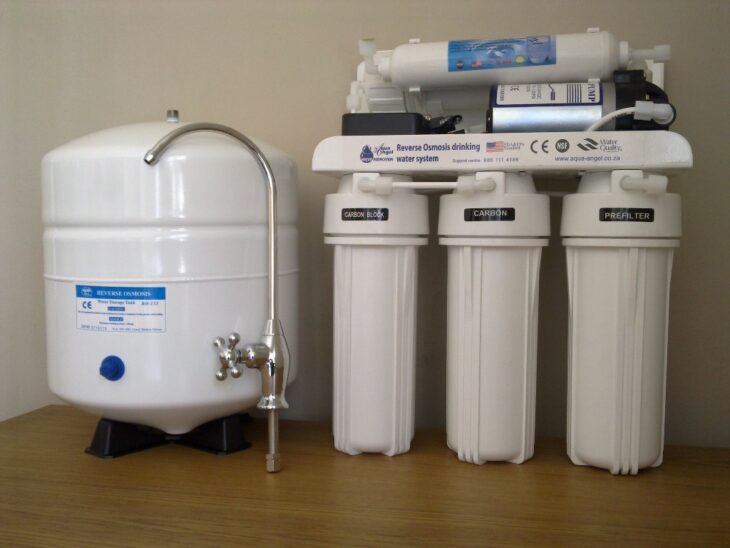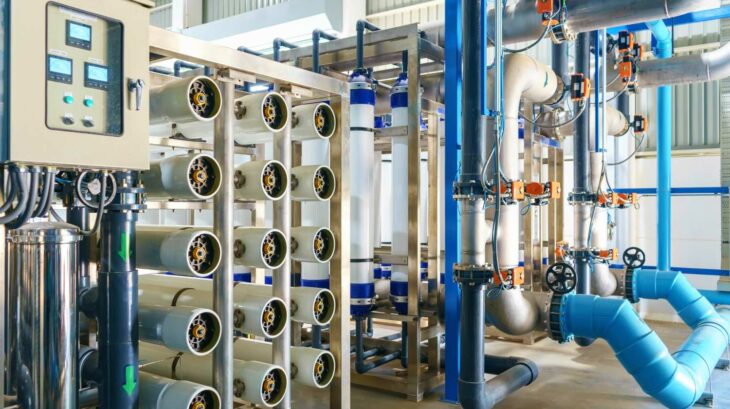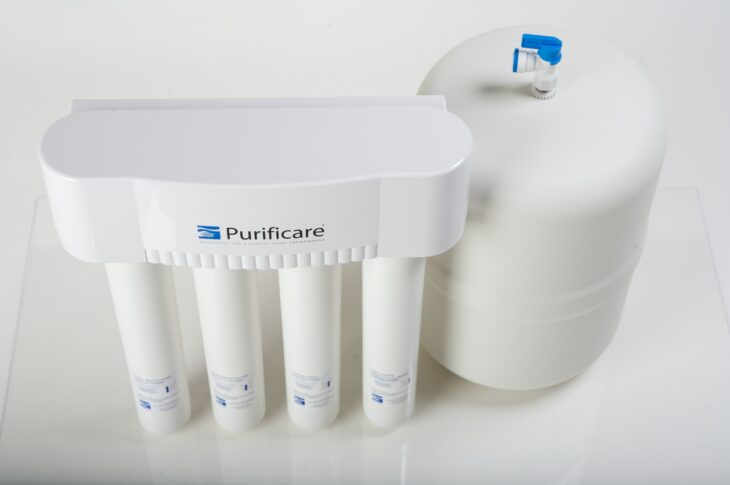If you’ve ever turned on the tap and noticed slightly dirty water or perhaps wondered if the water is as clean as it appears to be, then you’re already thinking about water filters.
There are several different options on the market, one of the most common is the standard aerated carbon filter. Once you start looking into filters you’ll discover the reverse osmosis system, which will lead to you to wonder if it is worthwhile.
One thing is certain; once you understand how the water treatment plants work you’ll want to have extra filtration in your home.
Contents
What Is Reverse Osmosis?

Source: amazon
Reverse osmosis is designed to remove minerals from the water, specifically ions, unwanted molecules, and large particles.
In essence, it is a simple membrane with tiny holes in it. These holes are small enough to prevent larger molecules and debris from passing through, at the same time water flows through effortlessly. Dissolved salts and heavy minerals are captured by the membrane, purifying the water.
It is even possible that bacteria are preventing from passing through, helping to keep your water safe.
At this stage, it’s worth noting that although chlorine is added at the treatment plant to kill bacteria, it is possible that more bacteria are picked by between the treatment center and your home.
The reverse osmosis system uses a second liquid solution that cleanses the filter section without contaminating the water going to your home. This cleansing action literally sweeps the impurities away and disposes of them.
Fitting a reverse osmosis water filter from cleanandclearwater.com.au is surprisingly easy, they can be fitted in line with your water supply by a professional in a few hours, barely disrupting supply. Most importantly, the reverse osmosis filter system is recognized as being the best filtration system currently available.
The Benefits Of Reverse Osmosis

Source: purewatersystems
There are a number of benefits attached to having a reverse osmosis system.
- Better Health
Reverse osmosis filters remove lead from the water. While lead piping has been banned for many years there are many places where it still exists and has not yet been replaced. The lead can contaminate the water and build up in your body, eventually causing lead poisoning.
Reverse osmosis filters remove the lead and reduce the risk.
As excess levels of lead have also been connected with increased risk of cardiovascular issues, poor fertility, and even brain or nerve damage, removing it from your water isn’t just a sensible idea, it should be considered an essential one.
- Improved Taste
Some people like the taste of tap water. However, once you’ve tasted the water that has gone through a reverse osmosis filter, you’ll find it more difficult to like the taste of tap water.
Studies suggest reverse osmosis filter has the best taste compared to tap water but, this is a subjective opinion.
- Cost-Effective
Having a reverse osmosis filter is an additional charge. You’ll need to pay out for the filter and potentially for a professional to install it in a suitable location. Of course, you can do these steps yourself.
However, once the initial cost has been absorbed you’ll find that the reverse osmosis filter can save you money. This is especially true if you currently drink bottled water. The cost of bottled water is not generally expensive but, over the course of a year, it can add to a surprisingly significant total. Your reverse osmosis filter needs little maintenance and the cost of replacing the membrane and cleansing fluid is surprisingly small.
- Low energy cost
A reverse osmosis system uses very little energy to run, that’s good for your energy bill and the environment.
It is also worth noting that the system is exceptionally easy to maintain, replacing the filter periodically should be all you need to do.
Complete reverse osmosis is generally referred to as a seven-stage process. You can choose to only adopt some of the stages if you wish.
- Space Saving
Despite being a powerful system it takes up surprisingly little space. Most people have them fitted to the main water supply, you’ll barely notice it under the kitchen sink.
In addition, you can have this fitted to one tap and expand the system as your budget allows. That makes it practical and easier on your wallet.
The Disadvantages of This Water Filter

Source: tyentusa
Of course, no system is perfect. There are several things to be aware of:
- Lack Of Minerals
Because the filter system successfully removes all minerals it is possible that harmful minerals will be removed and beneficial ones. While an excessive amount of heavy metals are not beneficial to your health, small amounts can be, the reverse osmosis filter removes all the minerals, potentially depriving you of health benefits.
- Hydration Issues
Research suggests that water that has had its minerals removed is not as effective at hydrating as alkaline water. Incidentally, alkaline water is more effective at hydrating than standard tap water. The reason for this is the removal of electrolytes by the reverse osmosis process. These electrolytes are essential for the movement of fluid through cells in your body, removing the makes it more difficult for our body to use the water you’re drinking.
- Waste
The reverse osmosis process uses additional water. In short, you’ll be using more water than normal and, because the extra water is mineral-rich, you’ll have to discard it. This makes the reverse osmosis process more wasteful.
In a world that is focused on environmental issues, this is not necessarily a good thing!
Is The Reverse Osmosis System Worthwhile?

Source: purahome
The answer to this will depend on how you feel about the minerals in the water. However, it is worth noting that you can absorb the same minerals from the food you eat, in safe quantities
Therefore, if you have any concerns regarding what it is your tap water it’s advisable to invest in a reverse osmosis filter and ensure you get all the minerals your body needs from the food you eat.
